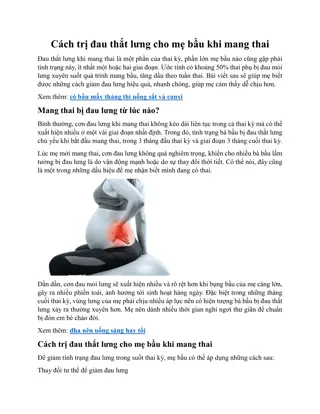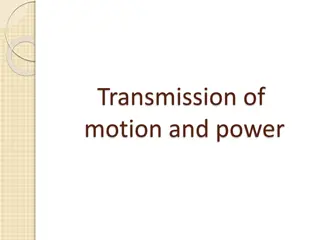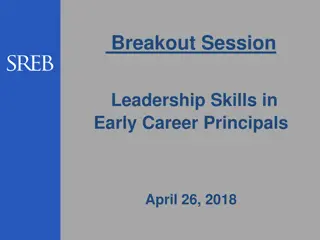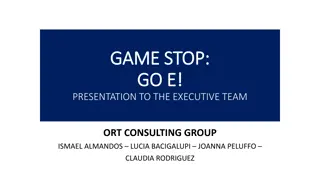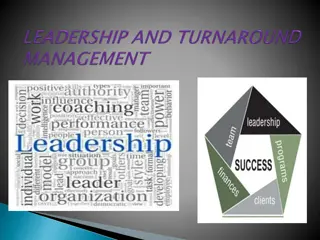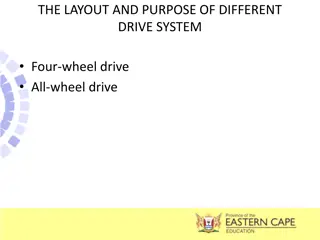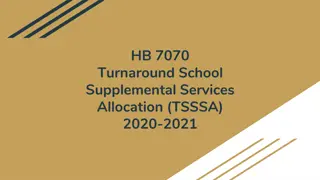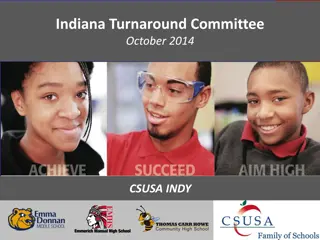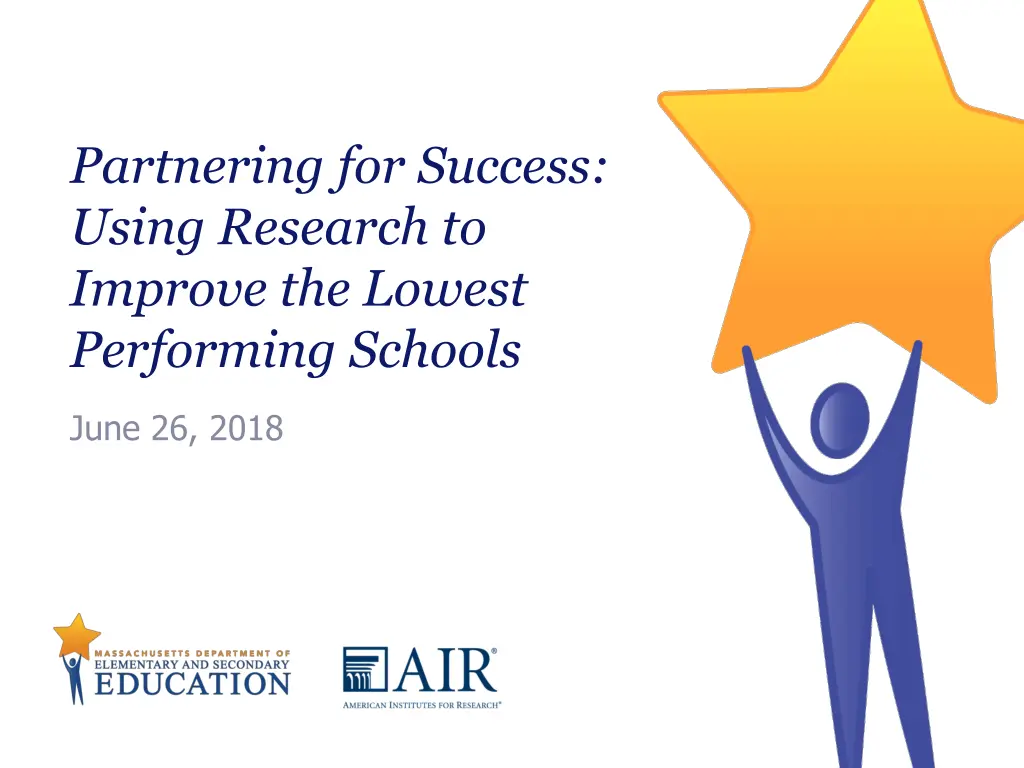
Using Research to Improve Lowest Performing Schools: Success Strategies
Discover how successful turnaround practices involving leadership, collaboration, intentional instruction, and school climate can significantly impact student achievement in low-performing schools. Explore a framework for school improvement, response strategies, and the equivalent of an additional year of schooling in ELA and math. Gain insights into effective interventions, supports, and strategies for creating a conducive learning environment that fosters academic growth and student success.
Download Presentation

Please find below an Image/Link to download the presentation.
The content on the website is provided AS IS for your information and personal use only. It may not be sold, licensed, or shared on other websites without obtaining consent from the author. If you encounter any issues during the download, it is possible that the publisher has removed the file from their server.
You are allowed to download the files provided on this website for personal or commercial use, subject to the condition that they are used lawfully. All files are the property of their respective owners.
The content on the website is provided AS IS for your information and personal use only. It may not be sold, licensed, or shared on other websites without obtaining consent from the author.
E N D
Presentation Transcript
Partnering for Success: Using Research to Improve the Lowest Performing Schools June 26, 2018
Framework for Massachusetts Department of Elementary & Secondary Education (ESE) Accountability and Assistance Voluntary Engagement With ESE Resources and Assistance Level 1 ESE Suggests Resources and Assistance Level 2 Prioritized for Resources and Targeted Assistance Level 3 Intensive Collaboration and Targeted Assistance Level 4 Increasing ESE Assistance and Accountability Level 5 2 2
Successful Turnaround in Action Turnaround Practices 1. Leadership, Shared Responsibility, and Professional Collaboration - The school has established a community of practice through leadership, shared responsibility, and professional collaboration 2. Intentional Practices for Improving Instruction- The school employs intentional practices for improving teacher-specific and student-responsive instruction 3. Student-Specific Instruction and Supports to All Students.- The school is able to provide student-specific supports and interventions informed by data and the identification of student-specific needs 4. School Climate and Culture. The school has established a climate and culture that provide a safe, orderly, and respectful environment for students and a collegial, collaborative, and professional culture among teachers that supports the school s focus on increasing student achievement 3
Equivalent to one additional year of schooling in both ELA and math Impact Study Findings 5
Turnaround Practices and Indicators 1. Leadership, Shared Responsibility, and Professional Collaboration 2. Intentional Practices for Improving Instruction 3. Student-Specific Supports and Instruction to All Students 4. School Climate and Culture 1. Leadership, Shared Responsibility, and Professional Collaboration 2. Intentional Practices for Improving Instruction Expectations 3. Student-specific Supports and Instruction to All Students Interventions and Enrichment 4. School Climate and Culture 4.1 Schoolwide Behavior Plan 1.1 Use of Autonomy 2.1 Instructional 3.1 General Academic 1.1 Use of Autonomy 1.2 High Expectations and Positive Regard 2.1 Instructional Expectations 2.2 Instructional Schedule 3.1 General Academic Interventions and Enrichment 3.2 Teacher Training to Identify Student Needs (Academic and Nonacademic) 4.1 Schoolwide Behavior Plan 4.2 Adult Student Relationships 1.2 High Expectations and Positive Regard 2.2 Instructional Schedule 3.2 Teacher Training to Identify Student Needs (Academic and Non-Academic) 3.3 Determining Schoolwide Student Supports (Academic Interventions and Enrichment) 4.2 Adult-Student Relationships 1.3 Vision/Theory of Action and Buy-In 2.3 Identifying and Addressing Student 4.3 Expanded Learning 1.3 Vision/Theory of Action and Buy-In 2.3 Identifying and Addressing Student Academic Needs Academic Needs 2.4 Classroom Observation Data Use 3.3 Determining Schoolwide Student Supports (Academic Interventions and Enrichments) 3.4 Multitiered System of Support (Academic and Nonacademic) 4.3 Expanded Learning 1.4 Monitoring 4.4 Wraparound 1.4 Monitoring Implementation and School Progress Implementation and School Progress 2.4 Classroom Observation Data Use 3.4 Multitiered System of Support (Academic and Non-Academic) 4.4 Wraparound Services and External Partners Services and External Partners 1.5 Trusting Relationships 1.5 Trusting Relationships 2.5 Student Assessment Data Use (for Schoolwide Decision Making) Data Use (for Schoolwide Decision Making) 4.5 Family and Community Engagement 4.5 Family and Community Engagement 3.5 Academic Interventions for English Language Learners 3.5 Academic Interventions for English Language Learners 2.5 Student Assessment 1.6 Time Use for Professional Development and Collaboration 1.6 Time Use for Professional Development and Collaboration 2.6 Student Assessment Data Use (for Classroom Instruction) Data Use (for Classroom Instruction) 3.6 Academic Interventions for Students with Disabilities 3.6 Academic Interventions for Students With Disabilities 2.6 Student Assessment 1.7 Communication with Staff 2.7 Structures for Instructional Improvement 2.7 Structures for Instructional Improvement 1.7 Communication With 1.8 Sustainability Staff 1.8 Sustainability 6
Lessons Learned in Massachusetts High School Turnaround Focuses on a comparison and contrast between low-performing and high performing high schools operating in similar contexts and serving similar students. Using Turnaround Practices and Indicators, the report identifies some key strategies that are important features of successful high schools. 7










